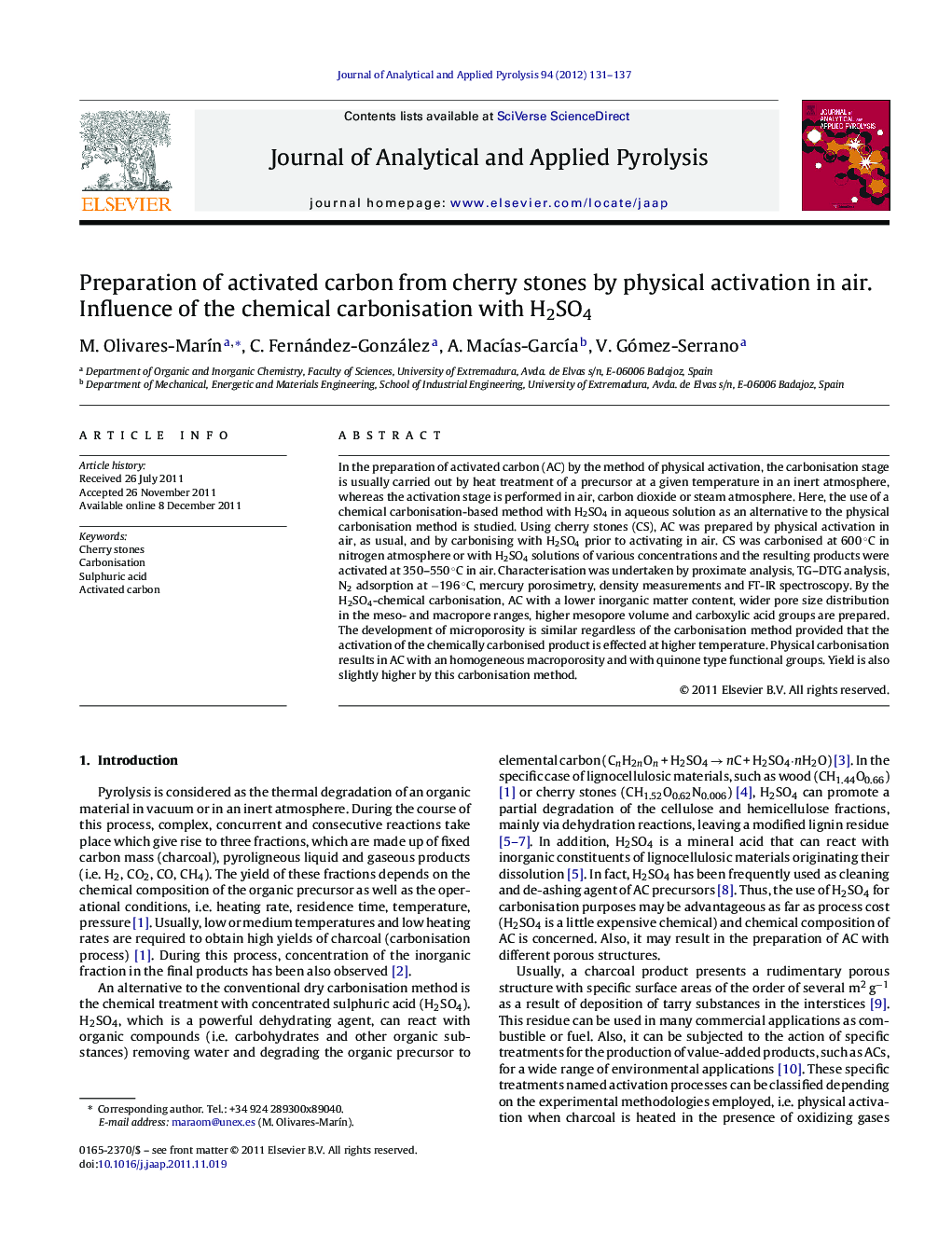| Article ID | Journal | Published Year | Pages | File Type |
|---|---|---|---|---|
| 1197431 | Journal of Analytical and Applied Pyrolysis | 2012 | 7 Pages |
In the preparation of activated carbon (AC) by the method of physical activation, the carbonisation stage is usually carried out by heat treatment of a precursor at a given temperature in an inert atmosphere, whereas the activation stage is performed in air, carbon dioxide or steam atmosphere. Here, the use of a chemical carbonisation-based method with H2SO4 in aqueous solution as an alternative to the physical carbonisation method is studied. Using cherry stones (CS), AC was prepared by physical activation in air, as usual, and by carbonising with H2SO4 prior to activating in air. CS was carbonised at 600 °C in nitrogen atmosphere or with H2SO4 solutions of various concentrations and the resulting products were activated at 350–550 °C in air. Characterisation was undertaken by proximate analysis, TG–DTG analysis, N2 adsorption at −196 °C, mercury porosimetry, density measurements and FT-IR spectroscopy. By the H2SO4-chemical carbonisation, AC with a lower inorganic matter content, wider pore size distribution in the meso- and macropore ranges, higher mesopore volume and carboxylic acid groups are prepared. The development of microporosity is similar regardless of the carbonisation method provided that the activation of the chemically carbonised product is effected at higher temperature. Physical carbonisation results in AC with an homogeneous macroporosity and with quinone type functional groups. Yield is also slightly higher by this carbonisation method.
► AC from cherry stones is prepared by the method of physical activation in air. Carbonisation is carried out using heat and H2SO4 chemical treatments. ► H2SO4 carbonisation yields AC with a lower level of inorganic matter. ► Microporosity is similar regardless of the carbonisation method. ► By the H2SO4 carbonisation, AC with wider meso and macropore distributions, higher mesopore volume and carboxylic acid groups is prepared. ► Physical carbonisation results in AC with an homogeneous macroporosity and with quinone type functional groups.
